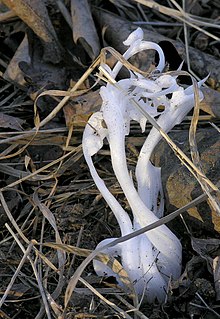Frost flower
The thin layers of ice are often formed into exquisite patterns, curling into "petals" which resemble flowers.
The formation of frost flowers is dependent on a freezing weather condition occurring when the ground is not already frozen.
Water is then drawn through these cracks via capillary action and freezes upon contact with the air.
They usually melt or sublime when exposed to sunlight and are usually visible in the early morning or in shaded areas.
Examples of plants that often form frost flowers are white crownbeard (Verbesina virginica), commonly called frostweed, yellow ironweed (Verbesina alternifolia),[2] dittany (Cunila origanoides),[3] and Helianthemum canadense.
